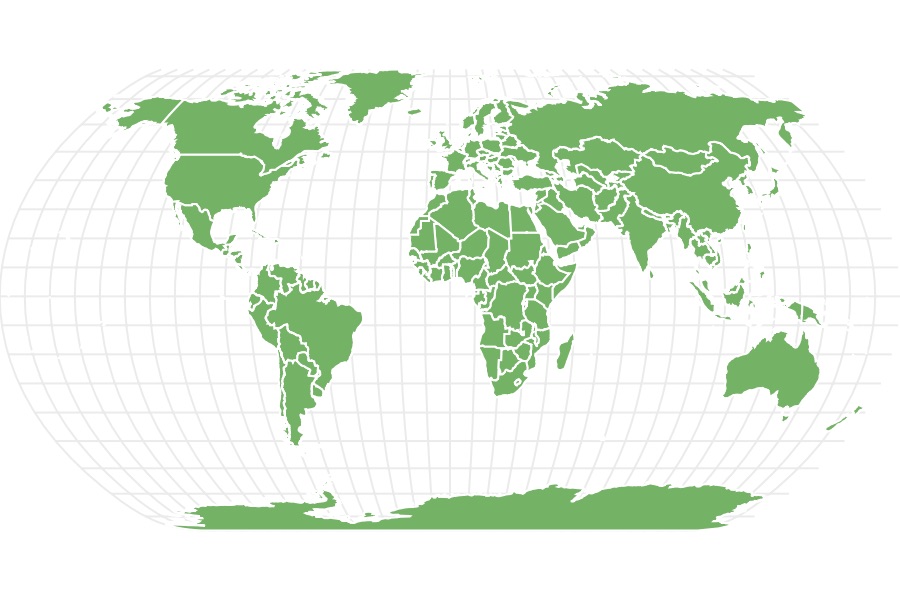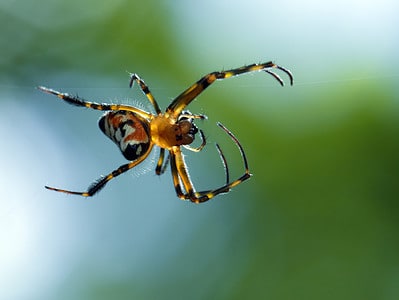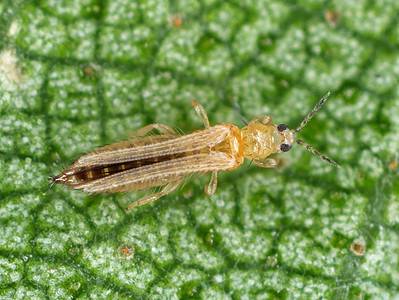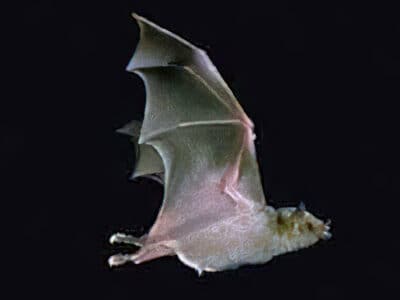Sea Trout
Salmo trutta morpha trutta
Change colors in freshwater and saltwater
Advertisement
Sea Trout Scientific Classification
- Kingdom
- Animalia
- Phylum
- Chordata
- Class
- Actinopterygii
- Order
- Salmoniformes
- Family
- Salmonidae
- Genus
- Salmo
- Scientific Name
- Salmo trutta morpha trutta
Read our Complete Guide to Classification of Animals.
Sea Trout Conservation Status
Sea Trout Facts
- Prey
- Insects, fish, shrimp, prawns, crabs
- Name Of Young
- Fry
- Group Behavior
- Solitary/School
- Fun Fact
- Change colors in freshwater and saltwater
- Biggest Threat
- Habitat change
- Most Distinctive Feature
- Silver scales
- Distinctive Feature
- Adipose fin
- Other Name(s)
- Sewin, peal, finnock
- Average Spawn Size
- 800 eggs per pound
- Habitat
- Cold streams and rivers, brackish estuaries
- Predators
- Pike, walleye, other trout
- Diet
- Carnivore
- Location
- Europe (native), worldwide (introduced)
- Nesting Location
- Gravel beds
- Migratory
- 1
Sea Trout Physical Characteristics
- Color
- Brown
- White
- Tan
- Silver
- Skin Type
- Scales
- Lifespan
- Up to 20 years
- Weight
- 1.1-5.3 pounds (usually), but up to 44 pounds
- Length
- 14-24 inches (usually), but up to 50 inches
- Age of Sexual Maturity
- 1-3 years
- Venomous
- No
- Aggression
- Medium
View all of the Sea Trout images!
The sea trout (Salmo trutta morpha trutta) belongs to the salmonid family Salmonidae. This anadromous form of brown trout splits its time between freshwater and saltwater. While originally from the Atlantic and Baltic coasts of Europe, you can now find sea trout around the world. Anglers prize sea trout for their size and their taste. While populations in Europe are on the decline, the species as a whole has flourished over the last few decades.
5 Sea Trout Facts
- Most sea trout measure between 1.1 and 5.3 pounds, but they can grow upwards of 44 pounds given the right conditions.
- The sea trout goes by different names depending on the location, including “sewin,” “mort,” “peal,” and “finnock.”
- During their spawning migrations, sea trout may travel nearly 25 miles in a single day.
- For some unknown reason, adult freshwater brown trout will occasionally migrate out to sea, thereby turning into sea trout.
- Young sea trout normally remain in freshwater for the first 1 to 5 years of life before eventually heading out to sea.
Classification and Scientific Name
The sea trout belongs to the family Salmonidae. This family includes not only trout but also salmon, Arctic char, graylings, and lenoks. The name Salmonidae means “resembling salmon,” as it derives from the Latin word salmo, meaning “salmon,” and the suffix –id-, meaning “resembling.” The sea trout is a member of the genus Salmo, which contains several dozen species of salmon and trout. Its specific name, trutta, is a Latin word that translates as “trout.” The sea trout shares the first part of its name with the brown trout (Salmo trutta), as the two are essentially the same species. To differentiate the anadromous sea trout from the freshwater brown trout, scientists use its full name Salmo trutta morpha trutta. Essentially, this translates to “a morph of a salmonish trout.”
Meanwhile, the sea trout’s common name stems from the fact that it spends part of its life at sea. The sea trout also goes by several other names depending on the location. Other common names include “peal” or “mort” (England), “finnock” (Scotland), “white trout” (Ireland), and “sewin” (Wales).
Other Fish Called Sea Trout
Occasionally, the term sea trout is also used to refer to unrelated species of anadromous salmonids. Fish that sometimes go by the name sea trout include brook trout, coho salmon, coastal cutthroat trout, Dolly Varden trout, and Arctic char.
Sea Trout Appearance
In terms of appearance, sea trout greatly resemble freshwater brown trout. On average, most sea trout typically measure between 14 and 24 inches long. However, they can grow up to 50 inches long under the right conditions. Most specimens weigh between 1.1 and 5.3 pounds but can grow up to 44 pounds. The body is shaped similarly to a torpedo and sports a small adipose fin between the dorsal and caudal fin.
The main difference between sea trout and brown trout is color. Compared to brown trout, sea trout appear more silver. However, once sea trout enter freshwater, they slowly transform from silver to brown. In freshwater, the back appears olive green, while the sides appear light brown or tan. After they finish spawning, they return to salt water and regain their silver color. The belly appears white, while the dorsal side and gill cover feature a smattering of dark blackish-brown spots.
A distinguishing feature of male sea trout is the kype, an upward, hook-like protrusion on the lower jaw. Like many salmonids, males develop a kype during the spawning season.
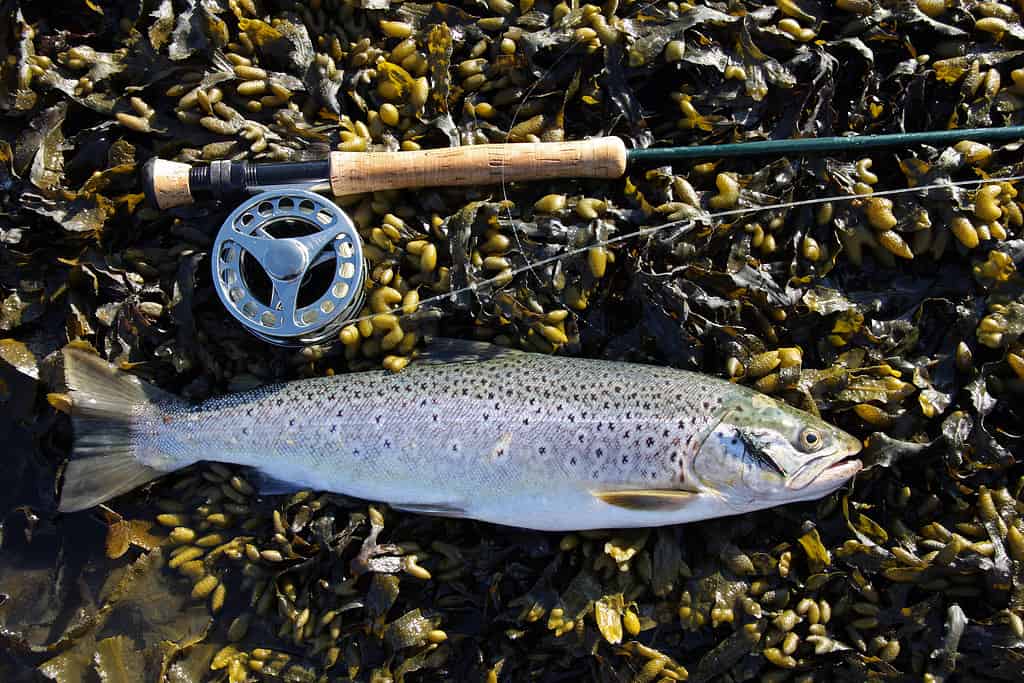
Sea trout are silver. The belly appears white, while the dorsal side and gill cover feature a smattering of dark blackish-brown spots.
©iStock.com/wcpmedia
Distribution, Population, and Habitat
Originally, sea trout hailed from central and western Europe. They historically ranged extensively along the Baltic and Atlantic coasts of Ireland, the United Kingdom, and the Black and Caspian Seas. However, due to their popularity as game fish, anglers introduced them to other habitats around the world. Today, you can find sea trout in Australia, New Zealand, Chile, Argentina, and parts of the United States.
Sea trout inhabit both freshwater and brackish water. They tend to live in cold streams and rivers when young and spawning. They may also live in larger, deep lakes that stay fairly cool year-round. Then, as adults, they migrate to brackish estuaries and coastal regions to feed.
Predators and Prey
Several animals prey on sea trout. Some common predators of sea trout include large predatory fish like pike, walleye, and other large trout. However, once sea trout reach maturity, they have few predators among other fish. Still, certain birds, such as eagles, or mammals like otters, may prey upon them.
As fry, sea trout mostly prey on small aquatic invertebrates and insects. As they grow, their diet expands, and they start to feed on larger prey. Adult sea trout mostly feed on smaller fish and small crustaceans like crabs, shrimps, and prawns.
Reproduction and Lifespan
Sea trout typically spawn in winter. The exact time can vary, but spawning normally takes place between November and February. At that time, female sea trout dig a nest called a “redd” in which they lay their eggs. They use their caudal fins to sweep debris from gravel to improve the flow of oxygen-rich water over the eggs. A single female typically lays around 800 eggs per pound of body weight, although older and larger females can lay more eggs per pound of weight. Male sea trout will then come by to fertilize the eggs. Often, more than one male will fertilize the same clutch of eggs. Sea trout eggs appear yellow-brown and measure between 2 and 5 millimeters in diameter.
Upon hatching, the juvenile sea trout eat their egg yolk sac until they emerge as fry. Sea trout fry tend to stick near the shallow parts of streams where the cover is thickest. Around 1 to 3 years old, sea trout develop into smolts and start to migrate toward the sea. They lose their brown color, turn silver, and travel in groups instead of on their own. Once they reach an appropriate size, mature sea trout will return from the sea to their native spawning grounds to spawn their own eggs. Unlike some other salmonids, which die after spawning, sea trout may spawn several times over their lifespan. A sea trout can live up to 20 years, although most specimens don’t live that long.
Sea Trout in Food and Cooking
Most people who enjoy seafood and fish agree that sea trout has a relatively mild flavor, especially compared to other trout. Compared to other trout, brown trout typically has a stronger, more classically “fishy” taste. Brown trout meat contains a lot of oil, which tends to lend it its fish flavor. That said, trout tend to take on the flavor of whatever they eat. Trout that eat a varied diet tend to taste better than farm-raised trout or trout that live in a small environment. As a result, sea trout tend to taste milder and sweeter than freshwater brown trout. Sea trout flesh appears pinkish or coral and features a decent amount of fat. Popular methods of cooking sea trout include baking, frying, and grilling. You can flavor sea trout however you like, with many people preferring to use just a little salt and pepper to enhance its flavor.
Population
The global sea trout population is performing exceptionally well. Due to their popularity as game fish, sea trout have been introduced into many habitats around the world. Thanks to these introductions, the overall sea trout population has grown over the past few decades. That said, the native sea trout population in central Europe has declined. The construction of hydropower plants and dams along rivers in central Europe hampered sea trout spawning migrations. These projects not only prevented migrations but also flooded many of the sea trout spawning grounds. While efforts have been made to improve sea trout migrations through the construction of fish ladders and bypass channels, these remediation efforts have not been able to compensate for the damage caused by human activities. Still, due to its widespread distribution, the IUCN classifies the sea trout as a species of Least Concern.
View all 293 animals that start with SSea Trout FAQs (Frequently Asked Questions)
Are sea trout carnivores, herbivores, or omnivores?
Sea trout are carnivores that prey on smaller fish and other aquatic creatures. The diet of a sea trout changes over its lifetime. As fry, they mostly eat invertebrates, such as insect larvae and nymphs. Meanwhile, adults mostly feed on fish, shrimp, prawns, and small crabs.
What is the difference between sea trout and brown trout?
Sea trout are the anadromous version of brown trout. They look almost the same as brown trout except that sea trout appear more silver as opposed to brown.
How many eggs do sea trout lay?
On average, a female sea trout lays around 800 eggs per pound of body weight. As a result, larger and older females tend to lay more eggs than younger females.
Do sea trout die after spawning?
Unlike most salmon, sea trout typically do not die after spawning. Approximately 75% of sea trout will return to sea after spawning to feed and recover. This means that sea trout can spawn numerous times throughout their lives.
Thank you for reading! Have some feedback for us? Contact the AZ Animals editorial team.
Sources
- , Available here: https://www.wildtrout.org/content/sea-trout
- , Available here: https://www.seapedia.net/sea-trout/
- , Available here: https://scottishwildlifetrust.org.uk/2018/12/turning-the-tide-for-scotlands-sea-trout/

